Cats love to sharpen their nails on a daily basis and in many cases they will use different surfaces and mostly house furniture. This is the main reason why owners decide to do the declawing method.
The declawing method, which is mostly described as partial paw amputation, was invented or included in medical care in 195os. It didn’t become common until the 1970s. Do you know how many declawing cats are in the United States?
Many of these methods represent animal cruelty because of post-operative complications. Do you know how much percentage of cat owners report at least one complication?
We prepared the ultimate list of cat declawing statistics and facts and some of the information will shock you. Keep on reading to check them all!
List Of 10 Cat Declawing Facts (Editor’s pick)
- The statistics show declawing range from 25-50%.
- Surveys show that 86% of hospitals perform declawing.
- The laser method of declawing cost up to $450.
- According to statistics, about 20 to 25% of adopted cats have been declawed.
- Around 55% of cat owners consider declawing as an acceptable practice.
- Studies show that 55% of declawed cats change their behavior after a procedure.
- In 2019. New York became the first U.S. state that outlaw the declawing.
- 70% of cats that were left in a shelter because of behavioral problems were declawed.
- Around 70% of declawed cats are neutered or spayed at the same time.
- Up to 90% of pet owners regret declawing their cat afterward.
List of 30 Cat Declawing Statistics
1. Kittens start scratching around 8 weeks old.
Scratching is normal daily cat behavior that helps them to remove dead husks from their claws. Also, cats scratch to mark their territory and stretch their muscles after sleeping.
According to data, most cats start scratching when they are around 8 months old. This time is ideal to train kittens on how scratching posts can be used.
Source: humanesociety.org
2. Young cats that declawed at less than 6 months of age will heal faster
If cat owners decide they want to do declawing procedures when the cat is born, it is best to do it when they’re kittens under 6 months of age.
Younger and immature cats will heal much faster and experience minimum pain if the procedure is done when they’re less than 6 months old. Also, the risk of complication is much lower than for adult cats.
Source: sunnysidevetclinic.com
3. The statistics show declawing range from 25-50%
According to cat owner statistics, there are more than 90 million cats in the United States. There is no evidence of the exact number of declawed cats every year but it ranges from 25-50% which shows that at least 22.5 million cats are declawed in the country.
Source: littlebigcat.com
4. Surveys show that 86% of hospitals perform declawing
In many states in the country declawing is banned but there are still many hospitals that perform declawing. A Survey of Southern California veterinarians found that around 86% of hospitals do this procedure. Even if this percentage seems very high the average number of declaw surgery per year was estimated at 14.


Source: littlebigcat.com
5. Around 5000 cats are declawed in the United States every day
Veterinarian clinicians make a lot of money if they included declawing procedures, and regularly add spaying or neutering in package deals. Declawing veterinarians refuse to accept the latest statistics and facts about declawing methods and the how bad effect are on the cat after surgery.
Declawing makes a billion dollars in this industry and that is the main reason why many association lobbies keep declawing legal. According to statistics, around 80% of veterinarians in the United States declaw cats. Every day, around 5000 cats are declawed in the country.
Source: sunnysidevetclinic.com
6. The laser method of declawing cost up to $450
To prevent scratching on carpet or furniture that can cause a lot of damage, many cat owners decide to take a pet to laser declawing. Depending on the state and the veterinary center, the laser can cost from $250 to $450.
The process includes cutting bones so the claws don’t grow anymore. All the testing procedures and overnight stays are usually included in the price.
Prices are quoted below for young and immature cats that are under 6 months old. According to prices in Sunnyside veterinary clinic declawing 2 front feet will cost $238.93, declawing 2 front feet and neutering $290.04, declawing 2 front feet, and spaying $340,18.
Because older cats are much harder recover and the pain is much worse, they will need more pain meds or longer hospitalization which can affect cost up to $100.
Source: sunnysidevetclinic.com
7. According to statistics, about 20 to 25% of adopted cats have been declawed
Statistics in the United States show that 20% to 25% of adopted domestic cats have been declawed. The results show that cat owners immediately knew they want to do the process of declawing when adopting the cat.
Source: petpedia.co
8. Around 55% of cat owners consider declawing as an acceptable practice
Other statistics show hos more than half of the cat owners consider that declawing is absolutely normal and acceptable practice. The rest of them, around 45 % oppose the procedure and consider it is sort of animal abuse.
Source: petpedia.co
9. Studies show that 55% of declawed cats change their behavior after a procedure
The declawing method is an ordinary procedure in many veterinary centers, but they reported how cats’ behavior changed after declawing.
One study examined that cats started to bite their owners after the declawing procedure and 55% of owners sent their pet to a veterinarian due to behavioral problems.


Source: petpedia.co
10. Nearly 42 countries have prohibited or restricted the declawing procedure
There are many veterinarians around the world that refuse to do declawing procedures, even in the places where this procedure is legal. Veterinarians think that it is cruel and has no benefits to cats which shows that cat owners mostly do it because of themselves. Also, many veterinarians revealed it violated veterinarians’ oath to “do no harm”.
In many countries, nearly 20 of them which includes Australia, England, and Japan, have prohibited or severely restricted all painful procedures which also includes declawing methods. Canada banned declawing in 2018
Source: peta.org
11. In 2019. New York became the first U.S. state that outlaws declaw.
In the United States, there are few states in which declawing is outlawed. States are Denver, the City of St. Louis, Pittsburgh, Austin, and Madison. Also, in eight California cities, this method is outlawed.
In 2019. New York becomes the first state in the country that outlaws this method. The Humane Society of the United States opposes cat declawing only except in cases when it is necessary for medical purposes which usually include removal of cancerous nail bed tumors.
Source: alleycat.org
12. Around 70% of cats that was left in a shelter because of behavioral problems were declawed
Statistics show how many cat owners adopt cats and then after some time decide to leave them in animal shelters. The main reason is behavioral problems but according to surveys by Forgotten Felines and Friends of Caddo Parish in Louisiana, 70% of those cats were actually declawed, which is the main reason why cats have behavioral problems.
The other survey from Delaware shelters shows that 75% of the cats that enter their shelter have behavioral problems because of declawing.
Source: alleycat.org
13. The number of cats in shelters dropped by more than 40% after declaw ban
According to cat shelter statistics, the number of cats that enter shelters dropped by 43.3% since the declaw ban. Many cat owners left their pets because of behavioral problems as a result of declawing. Los Angeles Animal Service Departments believe that the no-declawing policy saves many cat lives.
Source: citythekitty.org
14. An animal shelter in New Jersey in 2003. institutes a policy forbidding the declawing of adopted cats
The Gloucester County Animal Shelter in New Jersey instituted a policy forbidding the declawing procedure of any cat that is adopted from the shelters.
The main reason for this restriction is the high percentage of surrendered and euthanized cats that came to animal shelters because of problems after declawing.
Source: citythekitty.org
15. Nail trimming costs from $10 to $30
The alternative to the declawing method is nail trimming that can be done with cat nail clippers and even with regular human nail clippers.
If the cat owner is afraid to do it themself, the veterinary clinic or groomer can trim the cat’s nail and treatment usually cost from $10-$30.


Source: ipetcompanion.com
16. Soft Paws is one of the best alternatives to declawing
If the trimming takes so much time and the owner forgets to do it every few weeks, another popular alternative is SoftPaws. They are soft plastic tip that is glued to a pet’s nails. SoftPaws cost around $10 to $40 for nail tips.
Owners can easily glue them by themselves or do it in a local veterinary clinic. Applying costs from $15-$60. These plastic tips naturally fall off as nails grow, so the owner can replace them with a new one when needed.
Source: ipetcompanion.com
17. Surveys show that 33% of cats have at least one behavioral problem after surgery
After they did a declawing surgery on cats, many cat owners notice a lot of physical and mental changes. According to one survey, about 33% of cat owners notice how their pet has at least one behavior problem after declawing surgery.
Results also show that 18% of them notice the biting increased, 17% of cats suffer wound re-opening, 15% of cats refuse to use the litterbox, 11 % of them suffer from lameness and 10% of cat owners notice nail growth.
Source: ipetcompanion.com
18. According to stats, litterbox issues are 2 times more common in declawed cats
The change in the behavior will also affect the cat litter. According to some statistics, litterbox issues are 2 times more common in cats that went to the laser procedure.
Source: cofundmypet.com
19. Around 30% of cats suffer from a painful bone infection
Not that only declawing can affect a cat’s behavior, it can also cause different infections after surgery. One of the most common is Osteomyelitis which is a painful bone infection that sometimes can be fatal. According to statistics, 30% of declawed cats got this type of infection.
Source: cofundmypet.com
20. Statistics show that up to 20% of declawed cats develop a physical complication
Younger kittens have fewer troubles and their recovery is much easier than older cats, which can affect their physical health. According to statistics, up to 20% of cats that went to declawing procedures develop long-term physical complications.
Statistics also show that up to 50% develop an acute physical complication. Cats can have problems with arthritis, gangrene, chronic pain because of bone regrowth, and many more other health issues.
One of the studies from Jourla Veterinary Surgery in 1994. included 163 cats that had declawing procedures and it shows how 50% of them suffered from immediate post-operative complications that include pain and lameness.
Long-term complications were found in 20% of cats that were included in the study. A study published in 2001, show how 33% of 39 cats develop at least one behavior change right after surgery.


Source: cofundmypet.com
21. Internet survey shows that 25% of declawed cats house-soiled more than non-declawed cats
Changes in a cat’s behavior after a declawing procedure usually include a deterioration in behavior. According to one internet survey, 25% of cat owners admitted that their cat starter jumps on counters and tables more than before declawing. In the same survey, 15% of owners that have non-declawed cats admitted the same.
Source: cofundmypet.com
22. Up to 90% of pet owners regret declawing their cat afterward
Even if the cat owner were glad that cat won’t destroy their furniture after they did the declawing method, many of them actually regret doing it after they notice changes in the cat’s behavior or some series of health issues.
According to some surveys, from 75% to 90% of cat owners regret declawing their cat.
Source: cofundmypet.com
23. Declawed cats are most likely to bite as unneutered ones
One of the connections between declawed cats and behavior problems includes neutering. According to veterinary statistics, declawed cats are almost as likely to bite as unneutered ones.
Source: cofundmypet.com
24. Statistics show that 57% of owners give up their cat if they can be declawed
Most of the cat owners, according to cat owner statistics, wouldn’t euthanize or left the cat in a shelter if declawing is’ an option. But the statistics from surveys show how many of them actually will.
According to a survey of Canadian veterinarians, including 276 clients show that 57% of them will maybe get rid of the cat if the declawing procedure due to different reasons is not possible. Abut 4% of them would have seriously considered doing it soon.
Source: littlebigcat.com
25. From 75%-90% of people who request declawing will change their mind if they are fully informed
Many people don’t know about the pre and post-operation procedures and how declawing can affect both the physical and mental health of their cat.
Veterinarians who follow guidelines that include disclosing the nature of the surgery, potential complications, and different non-surgical alternatives conclude that a large majority, which includes up to 90% of people will change their mind when they know all needed information.
Source: littlebigcat.com
26. A survey from 2009. show how 95% of owners cited household damage as the main reason for declawing
One of the main reasons why cat owners decide to go for a declawing procedure is the damage to furniture. Many of them tried buying a scratcher from different materials like wood, jute, or carpet, but cats still damaged their furniture.
According to one survey from 2009., which was made by members of the Southern California Veterinary Medical Association, show how 95% of cat owners cited household damage as the main reason to declaw the cat.


Source: littlebigcat.com
27. Veterinarians declawed around 70% of cats that are younger than 1 year
It is recommended to declaw the cats when they’re are immature and young because of easier recovery, and many cat owners are informed about this topic. According to statistics, veterinarians declawed 70% of cats that have less than 1 year.
Another survey by the Southern California Veterinary Medical Association found that 76% of cats were declawed at less than 8 months of age.
Source: littlebigcat.com
28. The review from 2003. concluded that 20% of declawing procedure has some complication
Before the surgery veterinarians said to cat owners it is possible there will be short or long-term complications. Review from 2003. concluded that the complication rate is around 20%.
About 320 veterinarians were included in surveys and 34.8% of them reported long-term complications.
Source: littlebigcat.com
29. Cat owners revealed that 80% of cats had at least one complication after surgery
Even if the complication rate for declawing surgery is around 20%, statistics show that 80% of owners reported at least one medical complication. 55% of them reported their cat took 3 to 14 days to recover from the surgery.
Source: littlebigcat.com
30. Around 70% of declawed cats are neutered or spayed at the same time
Many veterinarians have package deals that include spaying or neutering while cats will go on declawing surgery. They usually don’t offer it to encourage declawing, but many cat owners comb these two methods at the same time.
According to one survey, about 69% of declawed cats are spayed or neutered at the same time.
Source: littlebigcat.com
To Sum Up
According to cat declawing statistics, many think that the declawing method is a type of animal cruelty. In the United States, it ranges from 25-to 50%, but at least 22.5 cats are declawed in the country. More than 30% of cats will have some post-operational complications. Changing the behavior is the most common after declawing surgery and many cat owners give up having pets and left them in animal shelters. A high percentage of cat owners regret doing it after they saw the cat’s behavior change. Cat declawing surgery can cost up to$450 depending on the size, breed, and other factors.



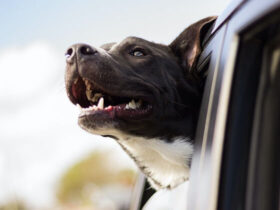














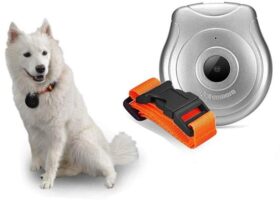





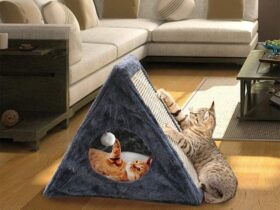



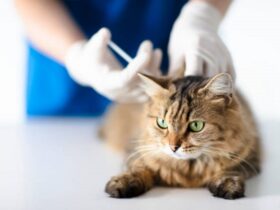

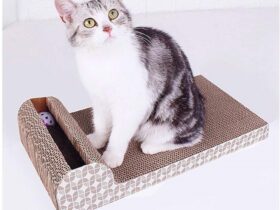



Leave a Reply